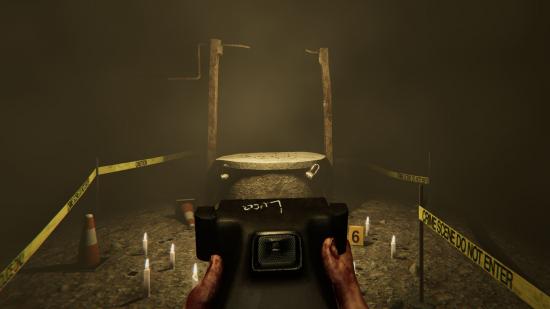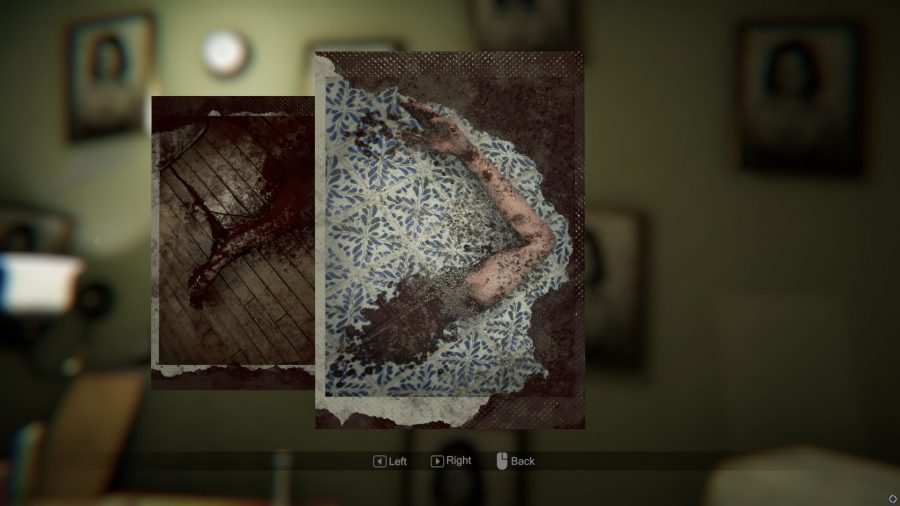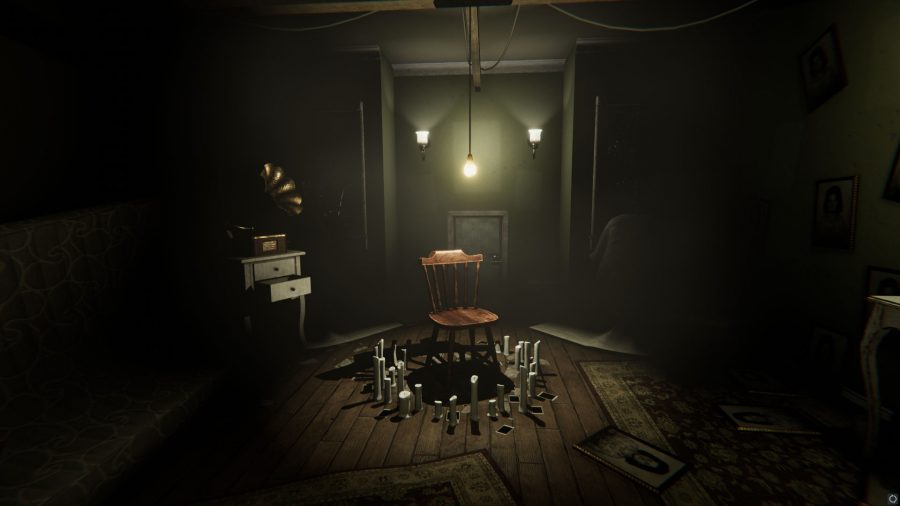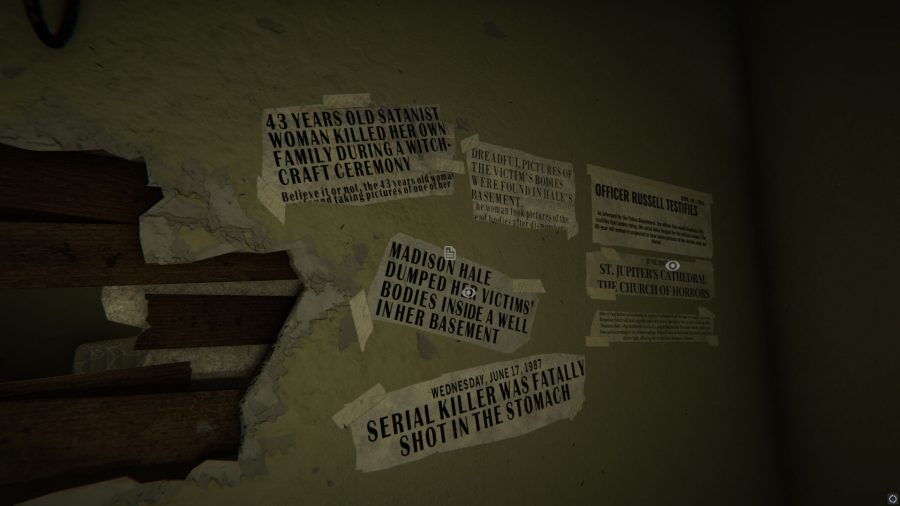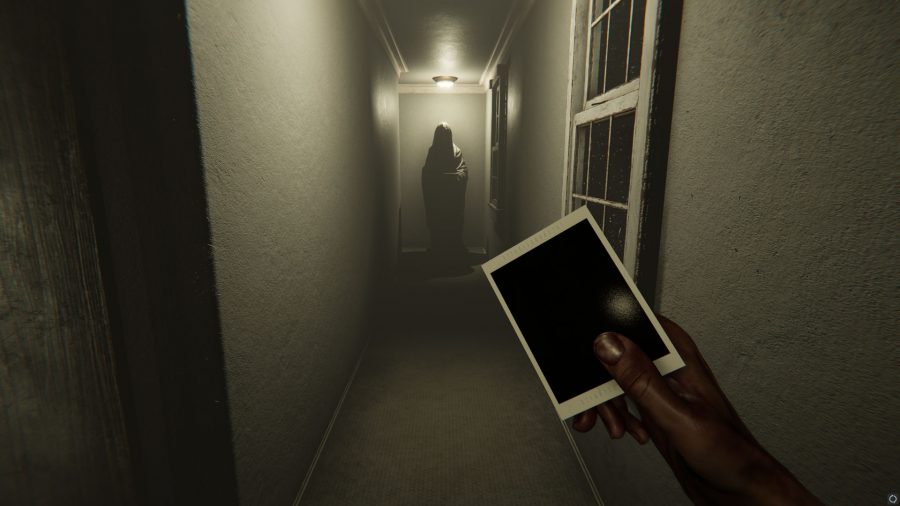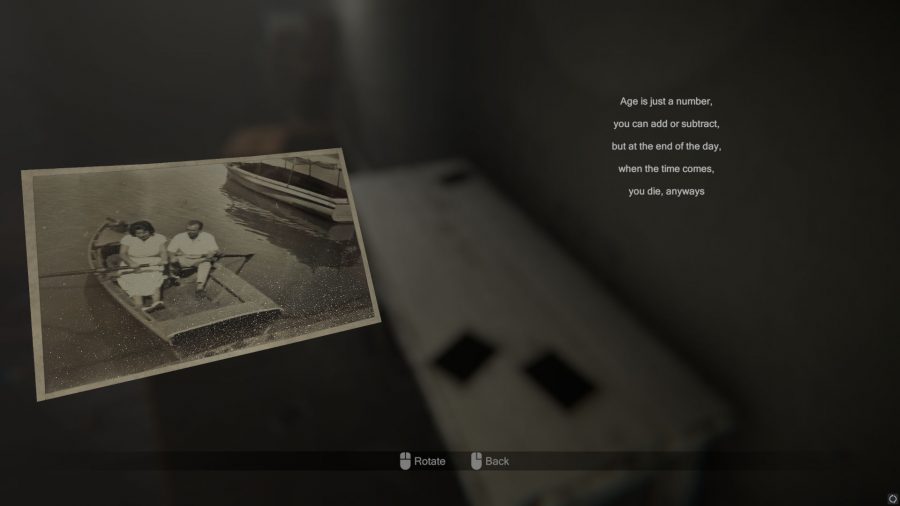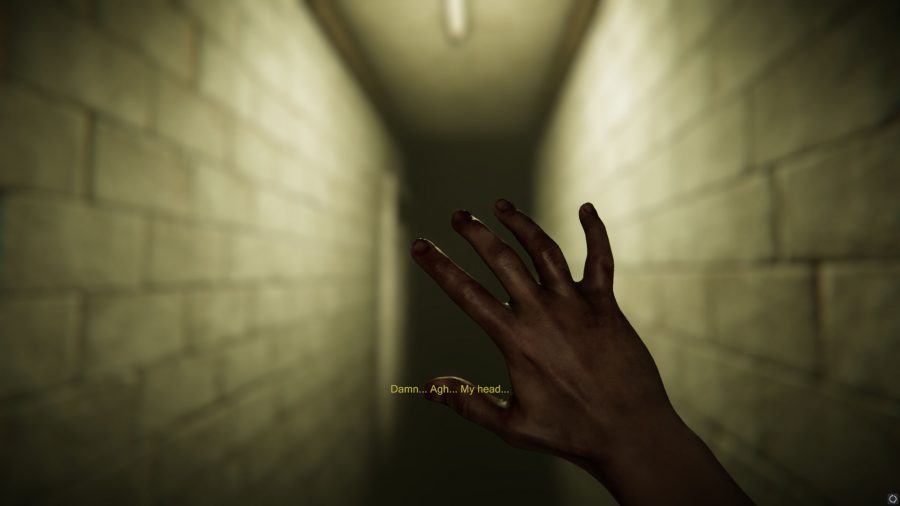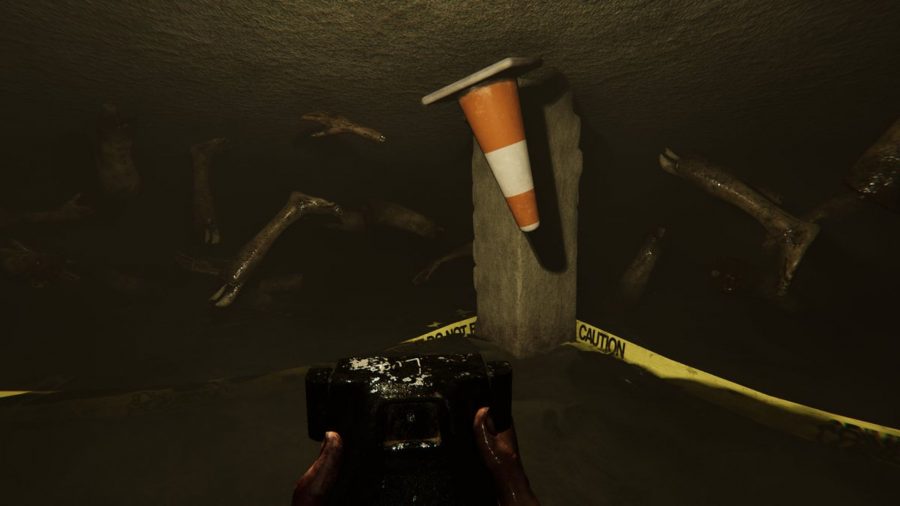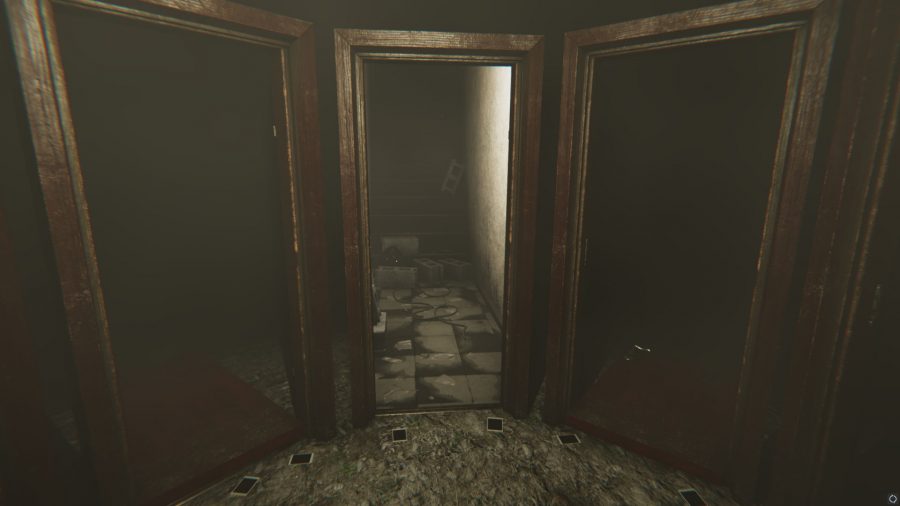Our Verdict
Madison review - a spine-tingling psychological horror with a deliciously demonic story and a palpably tense atmosphere, Madison is an all-out spooky vibe fest. It makes great use of both its polaroid camera and puzzle elements, all carried by a perfectly paced plot full of chilling secrets and morbid mysteries. Fans of the genre would be mad to miss it.
I’ve been obsessed with horror since I was a kid, devouring any spooky films I could get my paws on, even when I was very young (definitely far younger than I should have been, considering the subject matter). And when it comes to spooks, the supernatural and demonic has always been my jam above all else – the weirder, the better. Hence why, as soon as I saw the trailer for Madison, I knew I had to check it out. Unfortunately, the Switch version has been delayed, so this review is currently based on the PC version. I’ll update it as soon as I’ve had the chance to test it on Switch.
The tantalising plot lured me in from the offset, with its surreal imagery, penchant for severed limbs and disembodied eyes, and mysterious secrets hinting at some form of demonic threat. However, as much as I’m an old hat when it comes to horror films and would happily consume a movie rendition of Madison alone in a dark, empty house without batting an eye (pun intended), I’ll admit – I’m a little bit of a wuss when it comes to horror games.
There’s something so visceral and immersive in a good horror game that always manages to get my blood pumping and my jaw tensing far more effectively than any other form of horror media – likely due to the increased involvement of controlling the character and being forced to put yourself in their shoes. You can detach yourself from a book, movie, or TV show in a way that a well-crafted game simply won’t allow. And Madison preys upon this like the titular demon preys upon its victims.
The story of Madison sees you wake in a dark room, lit only by the static of an old CRT TV. There’s someone pounding on the door, making the most menacing sounds – is that a laugh, or a cry? It soon becomes clear that it’s the latter, as your father laments, condemns, and pleads with you over some kind of atrocity you’ve supposedly committed. Then you see that your hands are bloody, and you come across two bloodstained photos – one of a severed arm, the other of a severed leg.
You soon learn that your name is Luca, and there’s a tiny chance that you might have murdered someone. Oh, and your father thinks you’re possessed – and he might just be onto something there. From here, armed only with a polaroid camera, you must explore the decaying, eerie rooms of your recently deceased grandfather’s labyrinthine house, piecing together the mystery that surrounds you and your family.
You fall into a hellish pit of morbid secrets along the way, most of which revolve around a supposedly deceased serial killer called Madison, the question of her sanity and motives, her relationship with the occult, and how this may be more relevant to poor Luca than either of you could ever imagine.
Madison has a stellar sense of atmosphere right from the start, and it’s expertly maintained throughout. The architecture of the house and the decor of the rooms offers the perfect mixture of intense claustrophobia, suffocating, stale nostalgia, and ‘oh god, why are there so many doors, why did that TV just turn itself on, oh crap, that statue is moving’. Combine this with the constant changes the house undergoes as you fall deeper into this deranged mystery, pushing Luca to question his own sanity, and I truly feel Madison can ride the wave of pure spooky vibes alone and still be classed as a gosh darn, spine-tingling experience.
But it doesn’t do that. Oh no, this is a game of substance. The plot, while somewhat predictable to horror aficionados at times, is truly engaging and carried beautifully by its wonderful pacing. The slow, dread-filled crawl towards answers pushes and pulls you in different directions as you gain scraps of exposition from random notepads, graffiti, police radios, cassette tapes, and a bunch of other seemingly innocuous items.
When it comes to gameplay, I suppose you could say Madison is like a point and click with more steps. I found myself often thinking back to Layers of Fear, another horror experience I very much enjoyed, as you slowly creep around the house, scanning for any items you can interact with. But Madison certainly feels more involved with Layers of Fear, mostly due to some well-implemented gameplay mechanics.
Firstly, there’s a great focus on puzzle-solving. This, of course, is far from unique in this type of psychological horror experience, and has been a mainstay of the genre for a long time. However, I personally found some of these puzzles quite challenging, especially when the pressure of demonic activity is breathing down your neck, slowly slithering into your ears through spooky, ambient sounds.
Plus, piecing together codes and answers from random items and messages littered around the house, picking up everything you can in hopes that it’ll help you progress, and fiddling with combination locks and safes with that ever-looming sense of dread crushing you is certainly more nerve-wracking than your average puzzle game.
Then there’s the camera. Of course, the use of cameras in horror games isn’t new either – Fatal Frame’s been doing it for years. But Madison utilises this mechanic very well, offering multiple uses for it throughout the game, as well as forming a tie between Luca, his family, and Madison herself.
The intensity of lighting the room with a camera flash, repelling spooks, painstakingly shaking the photo to reveal what you’ve captured, and the added bonus of a quick snap sometimes causing the whole room to shake, picture frames to crack, or even concrete to explode, quickly turns your camera into both your best friend and you worst enemy.
Madison has very simple controls – you can walk slowly, walk a bit faster, take photos, shake those photos to develop them, and interact with items. That’s it, for the most part. Everything feels responsive and pretty easy to grasp, and the controls and prompts are signposted clearly, though I sometimes struggled to aim and interact with smaller objects.
You open doors, cabinets, and drawers by dragging them with your mouse, which is honestly a painstaking process, but this only adds to the intensity of unveiling what’s behind them. When you interact with items, you usually have a few options – rotate and zoom, and sometimes grab or read (which brings up a typed version of the written text, a nice touch).
Grabbing an item adds it to your inventory, which has a limited number of slots. This restriction can get frustrating as you progress and unlock more rooms, but only ends up further enhancing the tense pacing. It forces you to anxiously wander back and forth, slotting tapes into recorders, slides into projectors, and keys into locks, in order to make space for the next potentially useful thing that catches your eye. The stack of photos you’ve taken always takes up one slot, and you can cycle through them to look back on your handiwork, which is very useful when it comes to remembering specific information.
When interacting with certain items around the house, you can go through your inventory and try different things to see if they work together, in classic point and click fashion. Usually, the right item combination is pretty obvious, but finding these items is the real problem – you face a lot of things that you can’t open or solve yet, and plenty of doors that remain locked until you complete a specific task. I also can’t tell you how many times I just wanted to smash that hammer into various objects, like those darn clocks.
When it comes to sound design, Madison has it down to a fine art. It strips you of music, instead relying on ambient sounds, which serves to amplify every little creek, groan, or crack of thunder shuddering through your surroundings. Your camera bobs in time with the sound of Luca’s breath, and his voice acting is soft and perfectly emotive, further enhancing the immersion.
As you progress, the fully voiced cassette tapes, clips of news broadcasts on the TV, and songs on the gramophone lay on the tension so thick that you could cut it with a knife, and the jumpscares are, of course, accompanied by sound effects sure to make your unsuspecting soul momentarily ascend from your body.
Speaking of which, I should probably mention the jumpscares. If you couldn’t tell from the trailer, there’s quite a few of them, and they’re pretty darn unsettling. I’m not the biggest fan of jumpscare horror as I feel it’s often cheap and poorly implemented. However, it almost always works in Madison’s favour. Whether it’s a six-foot-tall statue of the Virgin Mary zooming down a corridor (not as funny as it sounds), or a creepy naked lady darting past you at sonic speed (also not as funny as it sounds), I found them to be very effective.
They reveal just enough to keep you hooked, but not enough to ruin the suspense, and it truly is an amazing feeling when you manage to snag a photo that you can ogle later. There also aren’t any real fake-outs – no yowling cats or friends tapping you on the shoulder here, instead replaced by a weird, satanic grandma running around in her birthday suit.
Aesthetically, Madison looks great. Its items, textures, and environments are super realistic, and the dishevelled nature of the house provokes that wonderful sense of perverted domesticity, especially when Luca reminisces over his fond memories in this once happy home. The camera also occasionally blurs and tilts as Luca experiences nausea and dizzy spots, which truly humanises him and intensifies his (and, in turn, your) mortality.
The use of lighting is brilliant, with dimly lit bulbs and lamps flickering away in each room and leaving just enough hidden in the shadows that you always feel the need to watch your back. The lighting is also used to signify specific changes in the environment, and sometimes changes to a different colour to emphasise certain events – a brilliant touch that both adds to the atmosphere and speaks a subliminal language to the player in a way that doesn’t in any way feel like handholding. Let’s face it, when a room is bathed in blood-red light, we all know what that means.
Performance-wise, the Steam version of Madison ran smooth as butter on my PC. Everything looked great, and I experienced no bugs or visual glitches bar one particularly funky door on a kitchen cabinet that decided it wanted to have a little party, and continued to vibrate throughout the game. Naturally, I can’t comment on how it will perform on Switch yet, but I’ll be sure to update this review when I find out.
Overall, I feel that Madison is a masterful entry in the psychological horror genre. It renders you entirely human, and preys on your weaknesses with its gruesomely foreboding atmosphere and unsettling visuals, while also challenging you and keeping you engaged with its well-paced narrative and cleverly implemented puzzles.
It perfectly encapsulates the spooky house plagued by demonic activity, and it managed to make me simultaneously want to charge on to uncover the mystery, and force quit the game so I could go watch some cartoons and forget about my problems – and isn’t that what a horror game is all about?
